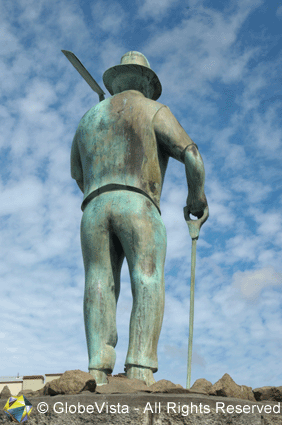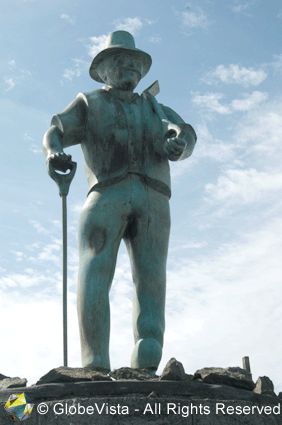Gumdigger Statue

Public Art: Gumdigger Statue
Sculptor: © Lynn Dunn
Description: The 2m high bronze statue of a burly gumdigger with a shovel on his shoulder.

Date: The Gumdigger statue was unveiled on the 8th of March, 1997.
Location: The statue can be found on Hokianga Rd, Dargaville, New Zealand.
History of The Gumdigger Statue: In 1996 the Dalmation Pioneer Trust commissioned artist and well-known wood carver, Lynn Dunn, to create a 2m wood carving of a gumdigger and from that carving, the bronze statue was created.
Inscriptions :
This statue was erected by the Dalmatian Pioneer Trust as a tribute to the early gumdiggers of the Kaipara District. Unveiled on the 8th March 1997 by his Worship the Mayor Mr P.A. Brown M.B.E.
Dalmatian Pioneer Trust
Organising Committee
Chairman : J.A. Juretich
Sec/Treasurer : M.Radich
M.Vuletich
I. Jericevich
L.Curac
N.Hilliam
N. Puharich
I. Yakas
N. Perdija
Sculptured by Lynn Dunn
History Of The Gumdigger : Kauri gum is formed when resin oozes from the tree, comes in contact with air and then hardens. The Māori used the fresh gum for chewing and as a fire starter as it is highly flammable. They also would burn the gum and mix it with animal fat to make dark pigment for their moko tattooing. Jewelry and decorative objects were also designed from the gum.
During the 19th century gum digging became a thriving industry in Dargaville and the upper North Island of New Zealand due to the commercial demand for the resin. This brought European settlers, especially Dalmatians to the area to dig up the valuable gum. The gum was found to be particularly good for making varnish and from the mid-1840s was exported to England and America. By the 1890s 70% of all varnishes made in England was from Kauri gum. It was also used extensively in making linoleum. However, by the 1930s the market dropped as synthetic alternatives hit the market. However, it was still continued to be used in jewelry and specialist high-grade varnish for violins. Between 1850 and 1950, 450,000 tons of gum was exported. Between 1850 and 1900 Kauri gum was Auckland’s main export.
